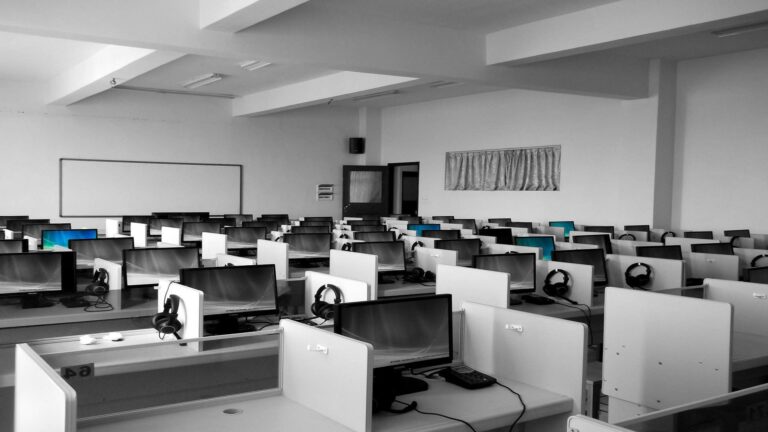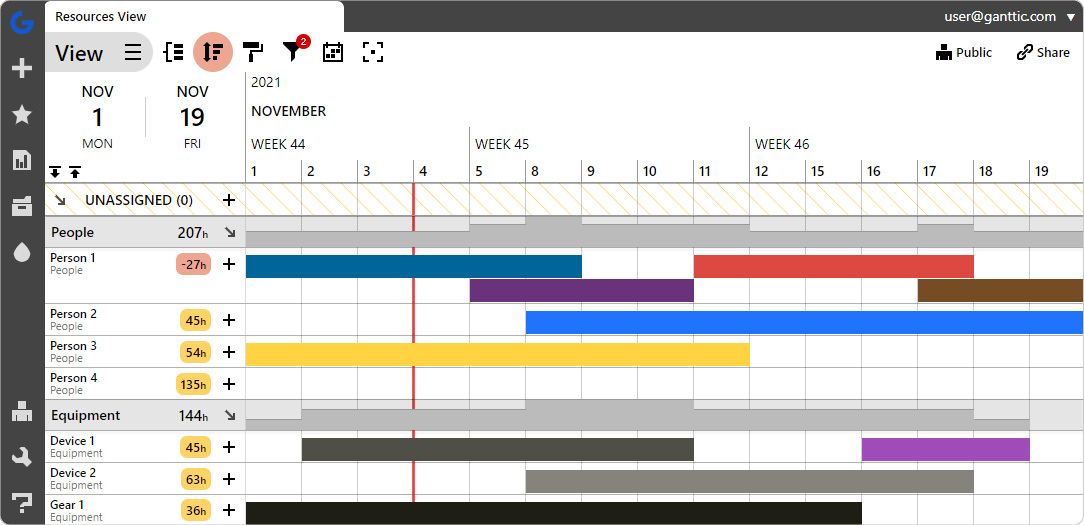COVID-19 has had a significant and long-lasting impact on businesses and workers around the world. And as a result, there have been some major shifts in work trends from remote working and flexible hours, to how to monitor and manage productivity and performance. But how long will these changes stick around? And what does the post-pandemic landscape look like in terms of workplace trends?
Although some businesses have adapted quickly and emphasized employee wellbeing during the pandemic, others have struggled to adjust to restrictions and new ways of working. Here we’ll outline five crucial post-COVID workplace trends that everyone needs to be aware of and start considering. As well as a few tips for companies looking to stay on top of the changes.
Workplace Trends for a Post Pandemic World
1. Remote Working
Last year, millions of businesses had to abruptly close down their offices and send workers home. And although there have long been concerns about how effective remote workers are, most businesses found that their teams were just as productive, if not more so when working from home.
Many businesses are now considering downsizing their offices or giving them up completely. Given that employees are working well at home, this makes sense especially when you consider the financial savings that businesses can make. All in all, it seems that remote work won’t be going away anytime soon.
How can workplaces prepare?
Post-COVID businesses will reassess their work from home policies, and at least 48% of workers are likely to stay working remotely part-time at least. Working from home offers a lot more flexibility for staff — cutting out any commuting time, and in many cases allowing them to maintain a better work-life balance. A lot of people don’t want to return to working in an office full time, now that they’ve adapted to remote working.
However, remote working isn’t without downsides — employee wellbeing might suffer and for some roles working from home limits what they can actually do if it’s not completely computer-based. While others may find that distractions at home are more of an issue than in the office, they’re also juggling childcare commitments, or they simply don’t have space for a proper office setup.
Overall, there should be more flexibility for remote-working, but provisions need to be in place for employees who can’t or don’t want to permanently work from home. That’s where hybrid work models come into play. Offering the best of both remote and in-office work, this post-pandemic workplace trend seems to be decent compromise for the moment.

Whether or not employees want to return to the office, it’s unlikely to be safe for everyone to return to a normal office any time soon without significant safety measures such as distancing and enhanced cleaning in place.
So for many organizations it makes sense to set employees up with a fully functional office at home so that they have everything they need, even post-COVID.
This means investing in all the essentials: a laptop, screen, keyboard, chair, and even small things like the right docks and adapters that make it easy to connect all the equipment. Businesses need to provide everything that workers might need to work effectively from home so they’re not held back by a poor setup. But of course there’s always drawbacks to this kind of work.
So what this also highlights is using the right software and online tools to help with collaboration and communication in teams. It’s easy for miscommunication to cause big problems when you’re working remotely, and having clear procedures, project briefs, and visibility over a team’s progress is going to be key.
How can workplaces prepare?
Setting up resource management software like Ganttic and using instant messaging platforms is going to be essential to keeping employees connected and minimizing any mistakes or confusion. Cloud storage is going to be necessary for keeping documents and files secure but accessible from anywhere for all employees.
Post-COVID, having a complete office set up at home is going to be one of the biggest work trends. In many cases, employers are going to have to invest in equipment, training, and software to ensure workers who are working remotely for the long term can do their job without any restrictions.
In addition to the right equipment and software, another key element for remote workers is having a reliable and convenient way to manage their work-related physical mail. Virtual mailbox services offer a secure and flexible solution that allows employees to access their mail online from anywhere, whether they are at home or on the go.
Collecting More Data on Employees
One of the ways in which organizations have adapted to remote working is to collect more data on employees to monitor and report on their productivity. This was a growing trend pre-COVID, but the pandemic has accelerated it.
Not being in an office it can sometimes be harder to know exactly what teams are doing with their time each day. So by requiring employees to clock in and out online, and using various tools to track their time, computer usage, and emails, businesses are getting more visibility over what their teams are up to.
How can workplaces prepare?
These things are just being tracked for productivity though, some companies are also checking in on engagement as a way of monitoring wellbeing. While it’s likely that employers will keep gathering more data on their employees post-COVID it’s crucial to follow best practices and keep data safe and secure. And there’s also a fine balance between monitoring productivity, and putting employees under too much pressure.
More Focus on Employee Wellbeing

The pandemic has been an extremely stressful time for many people and most workers have managed to adapt well to remote working, showing a lot of commitment to their work. But it’s important for businesses to understand the strain that teams have been under, and be aware of and prioritize wellbeing to prevent employee burnout.
How can workplaces prepare?
Ranging from enhanced sick leave to financial advice and assistance, more flexible working hours, or child care support — there are a number of ways in which businesses are going to be helping employees post-COVID.
Not only does this improve employees’ well-being, but it also makes them better equipped to do their job and improves engagement, motivation, and productivity. Employees will feel valued and appreciated and will be more invested in working towards company goals and targets. Plus, treating employees well during and after the pandemic is going to reflect well on a business for customers and for future employees.
One notable trend is the integration of wellness and nutrition into remote work arrangements to promote healthy eating habits from home. As employees search for balance, many are turning to services offering keto friendly meals to ensure dietary preferences are met without compromising convenience or nutritional value. This acknowledges the role of diet in maintaining productivity and mental health while working remotely.
Businesses are Focusing on Resilience
Instead of being focused purely on maximizing productivity, businesses are having to prioritize resilience and their ability to respond and adapt to disruptions. Before the pandemic, many organizations were looking to streamline roles, improve efficiency, and train employees for very specific jobs.
But post-pandemic there’s going to be more of a focus on roles and work that can help the company to adapt to major changes quickly. This means creating more varied, flexible positions that ensure employees aren’t limited to one narrow role and can be repurposed when necessary. Everyone in the business will be encouraged and supported to undertake more training and learn new skills that enable them to change roles or take on more responsibility.
How can workplaces prepare?
Creating training courses using a learning management system allows businesses to effectively train employees even if they’re working remotely. Providing training opportunities not only gives businesses more skilled workers, but it’s another way to engage employees and keep them motivated. Having a highly-skilled, versatile team is going to be key post-pandemic workplace trend, as businesses are likely to be recovering from the impact for several years.
Your business won’t get off the ground if you don’t have the funding to get the job done. Do your homework and find out what types of loans you’re eligible for, whether there are investors you can approach, or if there are government funding programs that cater to your endeavors. There’s also a possibility that you could receive funding from a private institution, like the SBA. However, it’s important to consider their business loan interest rate to check if you can afford the monthly payments.
The Future of Work

COVID-19 has transformed work for almost every industry. It’s accelerated the trends towards remote working and flexible hours, and for many businesses, they’ve found this works just as well if not better and there won’t be a return to their previous office setup.
Post-COVID work trends are going to focus on adaptability and resilience. Businesses will be more cautious as they recover and will focus on training and supporting their employees to ensure individuals and the organization is better prepared for further challenges. This is true whether you start your new business during post COVID or you’re trying to keep an established one profitable when things are turbulent.
To stay up to the challenge, integrate software that will stay with your company and help you grow for years to come. Ganttic is flexible resource scheduling and project portfolio management software. Online access for managers and team members ensures that everyone can see plans and projects stay up to date.
Set up a free demo or try Ganttic free for 14 days. Be prepared for anything that comes your way.
Stevie Nicks is Digital Editor at Just Another Magazine – a website that covers the topics you care about. You’ll find articles about lifestyle, travel, tech and trends on our site – each of which is written in our unique style.